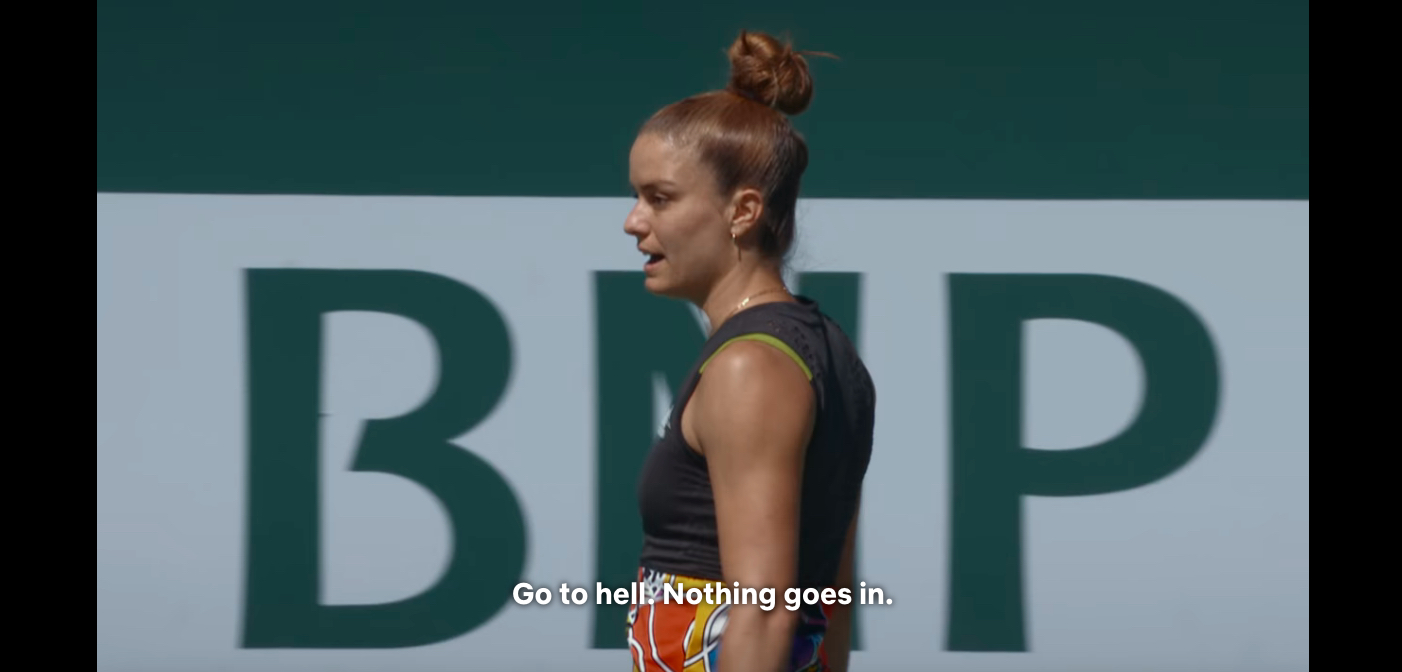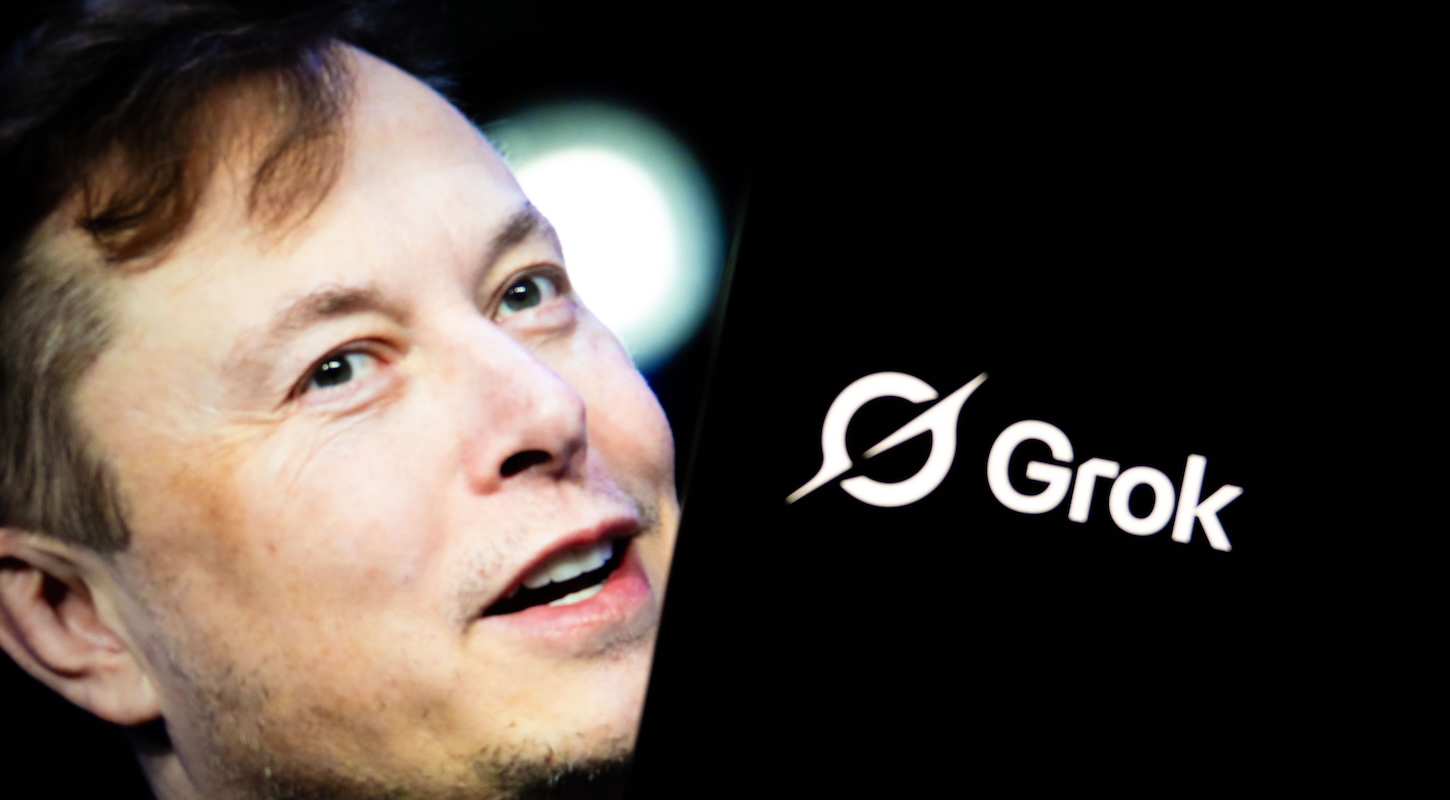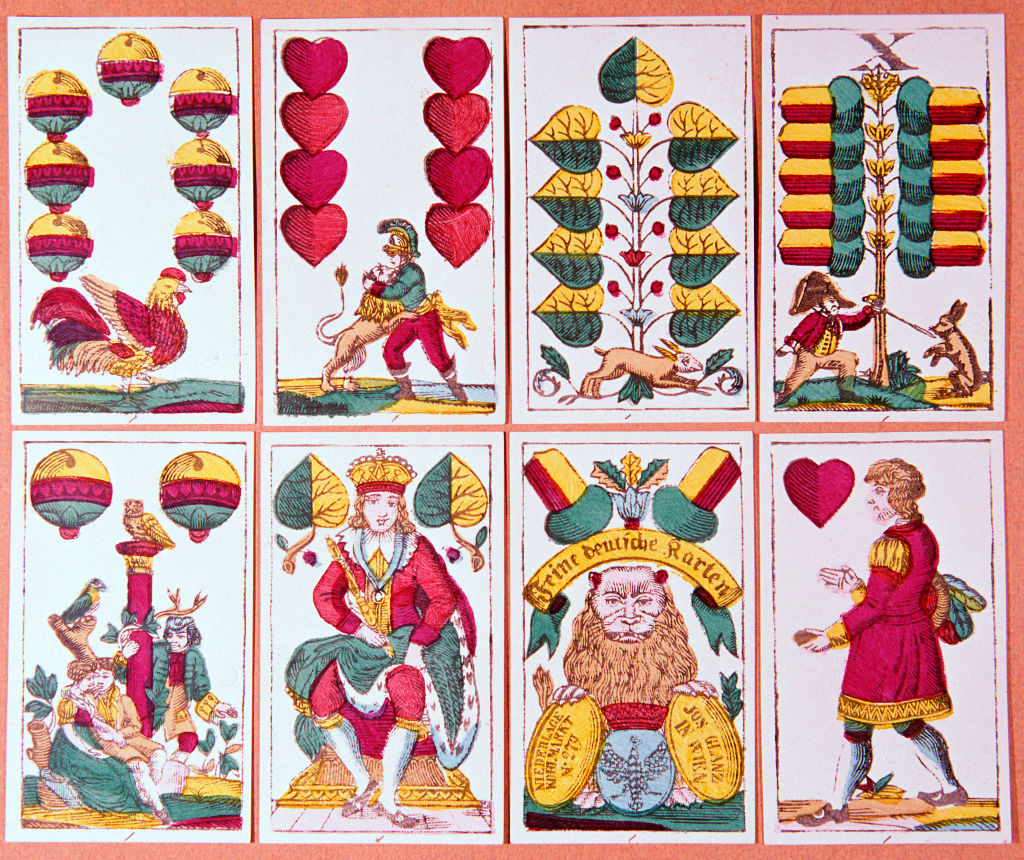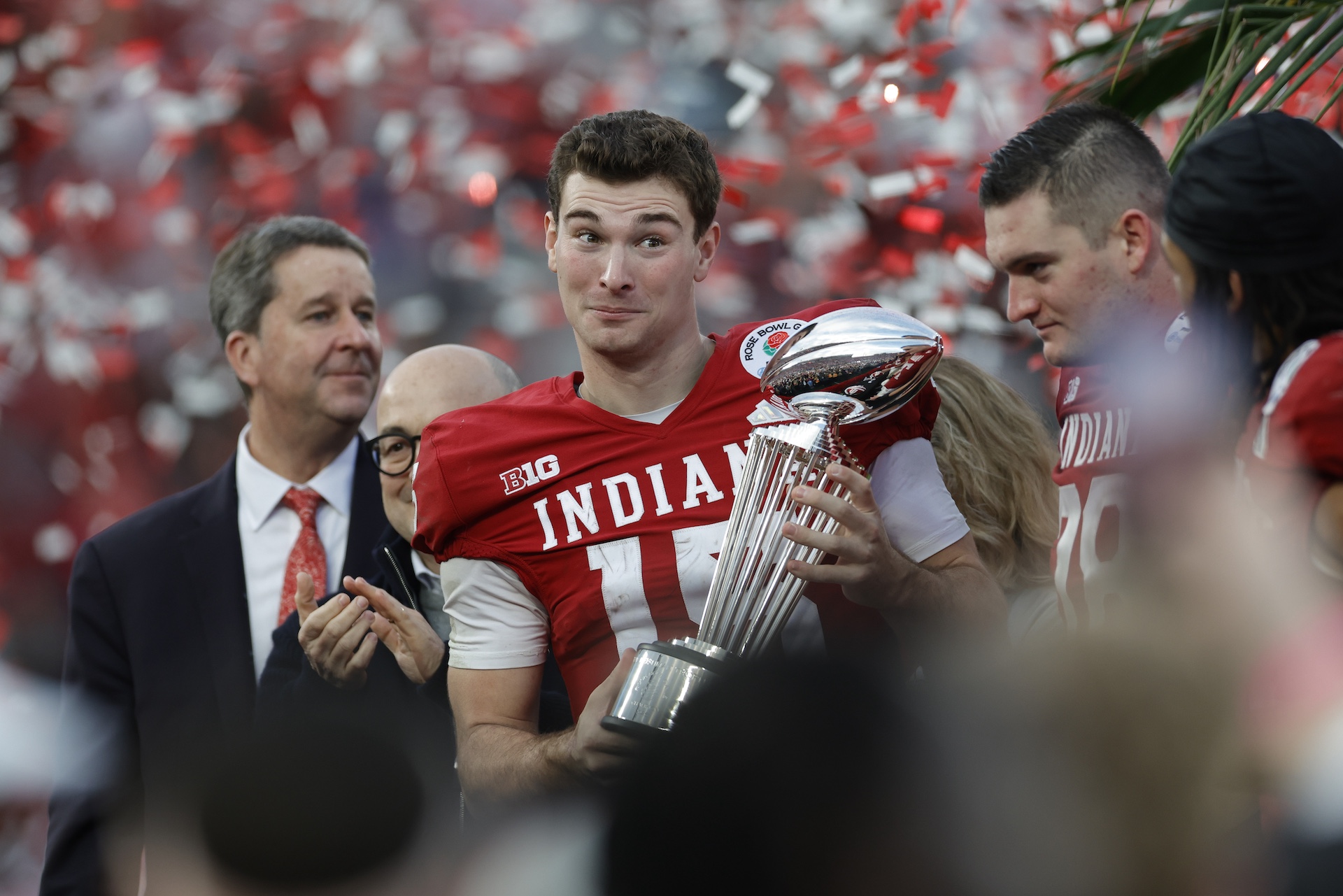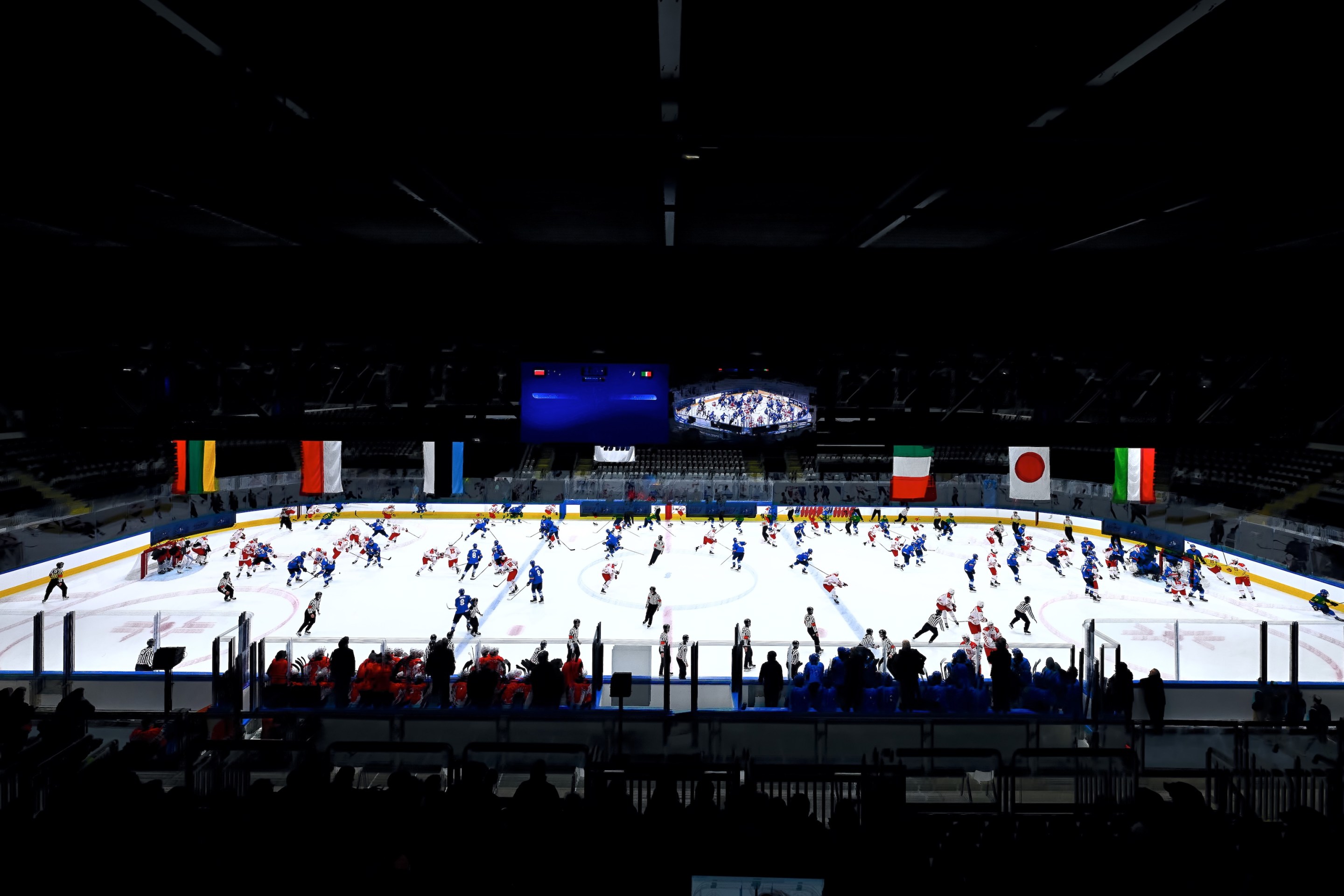It's basically a meme at this point that every sport is looking for its version of Formula 1: Drive to Survive. The Netflix reality show that sparked widespread interest in international racing demonstrated that more access can lead to more fans, especially when a sport obscures its personalities with full helmets and flameproof bodysuits. Tennis doesn't have quite the same problem, but with the era's greats retiring or winding down their careers, Break Point presents itself as an ideal opportunity to learn more about younger players. Does it deliver on that? Two Defector staffers watched the five episodes released this month and discussed what they learned.
Giri Nathan: I devoured Drive to Survive, but realized I was dreading Break Point, even though it’s made by the same team. I had no prior knowledge of or emotional baggage with Formula 1, so I was content to receive the show’s propaganda in the form of neatly packaged storylines. With Break Point, I was way too vigilant about anything that rang false. It’s not quite the same careless fun to watch a docuseries when you know the underlying stories. I’m curious what you thought as someone with sort of a medium knowledge of tennis: You edit my tennis blogs and know many of the characters, but aren’t immersed in the day-to-day of the tour.
Samer Kalaf: Like you, I went into Drive to Survive with no knowledge of that sport, but looking at your drafts for about five years now has made me familiar with a healthy number of tennis players, beyond the Big Three or the top-ranked men and women at the time. But before watching Break Point, I would've struggled to name one fact about Taylor Fritz. Now, I can confidently say that he won at Indian Wells in 2022 and has Tom Brady eyes. It did allow me to attach some characteristics to some names, at least, although the whole time I was conscious of the neat packaging.
GN: Tom Brady eyes, though since he’s Gen Z, his partner is a TikTok star, not a supermodel. To me the Fritz episode was the best example of what this show could offer existing tennis fans: clarifying close-up footage of a confusing incident. Ahead of his Indian Wells final against Rafael Nadal, it was reported that Fritz had a freak ankle injury during his practice. I’d been wondering what that looked like. The show actually had footage of the injury (an innocuous push off the court), Fritz describing the pain afterwards (“nine out of 10”), and his team’s deliberation about whether he should play in the final. I gained some respect for Fritz when he said he felt good enough to give it a shot, his coach Paul Annacone said, “Against him? In this wind?” and Fritz said, “Why the fuck not?” That’s juicier than what you’d get from breaking news tweets or exhausted post-match interviews.
I should also add that this same episode omits some crucial context: Rafa was playing through a stress fracture in his rib and the impact on his play was so obvious. If the filmmakers were making the (correct) point that tennis players have to manage tremendous pain, I don’t see why they showed only one side of it. Well, I do see why—it muddles the simple story about Fritz achieving his childhood dream and triumphing over a legend.
SK: Beyond injuries, I thought one flaw of Break Point was that the meltdowns (which were part of the marketing) were not that revelatory, or not more revelatory than what you'd see on the actual broadcast of the match. Most if not all of them tended to unfold right on the court, within range of the umpire's mic, so even the best cinematography added negligible value.
GN: Tennis players aren’t in cars and talking on radios. The drama is already pretty transparent to the viewer. We already get high-def, slow-mo replays after big points. Court mics capture most of the chatter. Maybe it’s just that tennis fans are already well-served by existing broadcasts, but I was sort of impressed by how unimpressive the doc made the act of playing tennis look. It’s a sport with brazen feats of athleticism and coordination, plus tons of sensory stimuli—so many good sounds! And they filmed sumptuous footage all season, only to chop it up into quick-moving highlight reels that make it hard for a newcomer to appreciate the rhythms of the sport, and that don’t meaningfully surpass what die-hards can already find on Youtube. It seemed like they were scared of showing a sustained passage of play, which is what you’d need to actually feel the drama of tennis, which often resides in the silences in between points, or accumulates over the course of a minute or two. I think they could’ve trusted their viewers a little more. If you're going to have the players deliver these grandiose monologues about pressure in every episode, you should offer a representative sample of the pressure.
SK: For me, the dullest episode was the pilot with Nick Kyrgios. I've seen his blowups on actual broadcasts; they were more revealing than what Break Point showed. There was no never-before-seen Kyrgios in this, and the producers left out some possibly relevant information. Also, the climax of that episode was him teaming up with all-time himbo Thanasi Kokkinakis to win the doubles title at the 2022 Australian Open. Did that really matter that much? As the show's talking heads kept saying, there's only one winner of each singles tournament, which means there are a lot of losers—which means a lot of editing and narrative construction is required to make losers look like winners. It felt like when Drive To Survive would show one of the dreadful teams finally finishing in the points.
GN: Yeah, it was a little dishonest about the relative prestige of singles and doubles. This isn’t to say that the “Special K” himbo duo wasn’t an entertaining storyline. But when the critics and haters complain that Nick Kyrgios hasn’t applied himself, they aren’t actually clamoring for him to go win a doubles title with his childhood friend. They’re talking about his singles career. So when you hear Nick’s self-satisfied quote at the end, it’s sort of like … OK. Maybe this is just a setup for the Wimbledon episode—if anyone’s tennis quality was incentivized by the prospect of Netflix attention, it was Nick—but even then, wouldn’t you want to end on less of a note of closure? I know I’m the wrong audience for this, having gone through my own professional cycle of belief and resignation about his tennis, but still. The childhood footage was cute, though. I liked his mom’s honest quote about how the pressure and attention caused him to sour over time.
SK: We've only seen five of the 10 episodes—the other five come out in June—but I do wonder if this show better served the women's side than the men's. There was no Serena, but I'm guessing she shows up in the second batch of episodes. For me the most compelling players on Break Point were Ons Jabeur (they actually included fun shots from her matches) and Maria Sakkari (they actually included her best meltdowns from her matches). On the men's side, the fifth episode focused on guys who would eventually get their asses kicked by Rafael Nadal at the 2022 French Open. The way he warmed up in front of them and hogged the carpet space in the tunnel was pretty funny.
GN: That was a clever way to use the awkward pre-match tunnel footage that fans always see on broadcasts, as players silently share the space. They’re letting new viewers in on a longstanding visual joke. I laughed when Rafa did his usual super-athletic full-body warm-up while Casper Ruud just had his bag slung over his shoulder, half-heartedly miming a tiny stroke with the back of his hand. Obviously that exact contrast plays out on court a minute later. I came away selling my shares in Ruud. He was too content with loss. He needs to be less well-adjusted and delete his healthy sense of perspective. Come on, dude. [Ed. note: This was written before Ruud lost to unseeded Jenson Brooksby in the second round of the Australian Open.]
My favorite non-tennis footage: the surprisingly intimate conversations between Jabeur and her husband-slash-trainer Karim Kamoun, as they talked about wanting to have a baby, or separating their personal and professional lives. Bickering about the imprecision of medicine ball tosses—what couple hasn’t been there? It wasn’t revelatory, but Break Point did confirm that Jabeur is the pre-eminent sweetie on the WTA Tour, and pretty much anyone who comes across her winds up rooting for her. They also succinctly and accurately explained Jabeur’s style of play, which was curiously absent from the other player profiles. If you’re doing a series on a “styles make fights” sport, it’s worth spending a second on the styles. But overall, the narrative of a player coming from Tunisia, a region without much tennis infrastructure or history, and reaching the top of the game with an intentionally all-Tunisian staff is compelling enough that you don’t need to gussy it up, and they didn’t.
SK: I'm trying to think of what else stuck out beyond what we've mentioned so far ... the part about Rafa's uncle Toni coaching Felix Auger-Aliassime but still rooting for his nephew at the French Open felt like a big deal on the show, but was it that significant in real life?
GN: All I remembered was that Uncle Toni didn’t appear in either player’s box during their match. I honestly didn’t remember that he openly said he wanted Rafa to win, but it was funny to revisit. I’d say at the time, it was more of a passing oddity than any expectation that Toni would be revealing (or withholding) that One Weird Trick To Defeating My Nephew At The French Open. What you texted to me about Uncle Toni coming off like late-era Phil Jackson made me laugh, in the context of that reckless quote. And if you spent your whole career coaching the greatest, it’s hard to discern how much special sauce you actually provide. Coaching in tennis is weird. In the Sakkari episode, they did a good job of evoking the surreal dialogue between a player and coach during a high-pressure match. She’s speaking in Greek to him; he doesn’t speak it. He stands up; she angrily asks why he’s standing up. The player is competing in a stadium of thousands but still hyper-sensitive to these tiny body language cues from their player’s box. This is always a great subplot of matches involving livewire players—seeing how they take it out on their team, who know the job is to absorb it and de-escalate.
SK: Shortly after I finished watching Break Point on Tuesday, I saw a clip of Sakkari at this year's Australian Open, getting all worked up over her 18-year-old opponent Diana Shnaider's celebrations. Sakkari won that match, but it was a funny coincidence, and confirmation that she was accurately portrayed on the show.
Sakkari FUMES over her opponent’s celebrations... 🤬🤬🤬
— Wide World of Sports (@wwos) January 18, 2023
🖥 #AusOpen LIVE | https://t.co/80XjQpwd6J#9WWOS #Tennis pic.twitter.com/Lw32tqM44x
GN: Correct, Maria is an intense one. Great performance from Shnaider, who should definitely drop out of NC State and go pro. Is the average college student’s dorm as filthy as Matteo Berrettini and Ajla Tomjlanovic’s hotel room? That was a reality check for anyone with rosy notions of what it looks like when good-looking tennis players date each other. There was crap everywhere. They’re streaming movies neither of them want to watch. They’re arguing about Ajla’s early wake-up that might disturb Matteo’s recovery sleep. I thought they'd be able to afford two rooms.
SK: I can understand that life during a major tournament can get pretty hectic but damn, they lived like this? They're no longer dating, but I enjoyed that someone went back to look for where Ajla ended up doing her early interview. It was outside, near some bushes. She seemed amused by the whole thing, though.
The fact that you found this 😲no need for a sad face, it’s pretty funny a year later😅
— Ajla Tomljanovic (@Ajlatom) January 17, 2023
GN: You can see that they’re actually in the minority, in the sense that they can travel together to some tournaments, and their partner can directly relate to their struggles. Touring is crushingly lonely for many tennis players. And below a surprisingly high ranking threshold, touring is also a financial grind, which I hope future episodes explore in greater detail.
SK: I completely accept without argument that it's a rough road for the low-level players on tour, but there was something funny about having Jessica Pegula talk on the show about pay inequity. Her quote was fine, but I don't know if a person whose parents own the Buffalo Bills and Sabres can really speak to that experience.
GN: Some recent news on that front:
lmaooooo
— Jessie Pegula (@JLPegula) January 16, 2023
SK: Classic.
GN: If the strength of a series like this is the accretion of behind-the-scenes detail, then I think they should try to capture as many FaceTime calls as possible. Berrettini’s post-match chat with his grandma, while sitting in an ice bath, was wonderful. He’d just gotten a tough win over Carlos Alcaraz, which she’d watched on TV. She said “Mamma mia,” and you know what, I agree. I also have a grandmother with an unrealistic sense of my handsomeness and talent. (Though for Matteo, OK, it’s actually justified on both counts.) On a very different note, Nick Kyrgios FaceTimes his girlfriend Costeen from his doping test room, and you can see exactly how golden-brown and dehydrated his cup of piss is after playing a match in Australian summer. Now that’s film-making. That’s the exact detail missing from my tennis life.
SK: Mamma mia, indeed.
